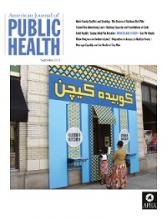Addressing health disparities in the mental health of refugee children and adolescents through community-based participatory research: A study in 2 communities
Refugee youth have a much higher risk of experiencing psychological distress and mental health disorders than their non-refugee U.S. peers. Much of this elevated risk is due to "multiple acute and chronic stressors" that youth face throughout their refugee experience. To explore the mental health needs and community strengths of Somali Bantu and Bhutanese refugee youth in Massachusetts, this study utilized a community-based participatory research approach - a method that ensures the communities being studied are meaningfully involved at all research stages. Results indicated that both Somali Bantu and Bhutanese refugee youth experience symptoms of conduct problems, anxiety, and depression. Participants in both groups emphasized that financial problems and language difficulties - both inter-generationally and with outside institutions - were major concerns for youth and their families. However, both groups indicated that their communities, family and friends, and refugee service organizations were sources of support. Moreover, 25% of the Somali Bantu participants identified teachers and school personnel as important resources. In addition to providing a comprehensive understanding of the mental health needs of refugee youth, this study also illustrates how service providers working with refugees are well-positioned to act to protect youth from negative outcomes. (Immigrant Integration Lab at Boston College)
Betancourt, T. S., Frounfelker, R., Mishra, T., Hussein, A., & Falzarano, R. (2015). Addressing Health Disparities in the Mental Health of Refugee Children and Adolescents Through Community-Based Participatory Research: A Study in 2 Communities. American Journal of Public Health, 105(S3), S475–S482. https://doi.org/10.2105/AJPH.2014.302504

